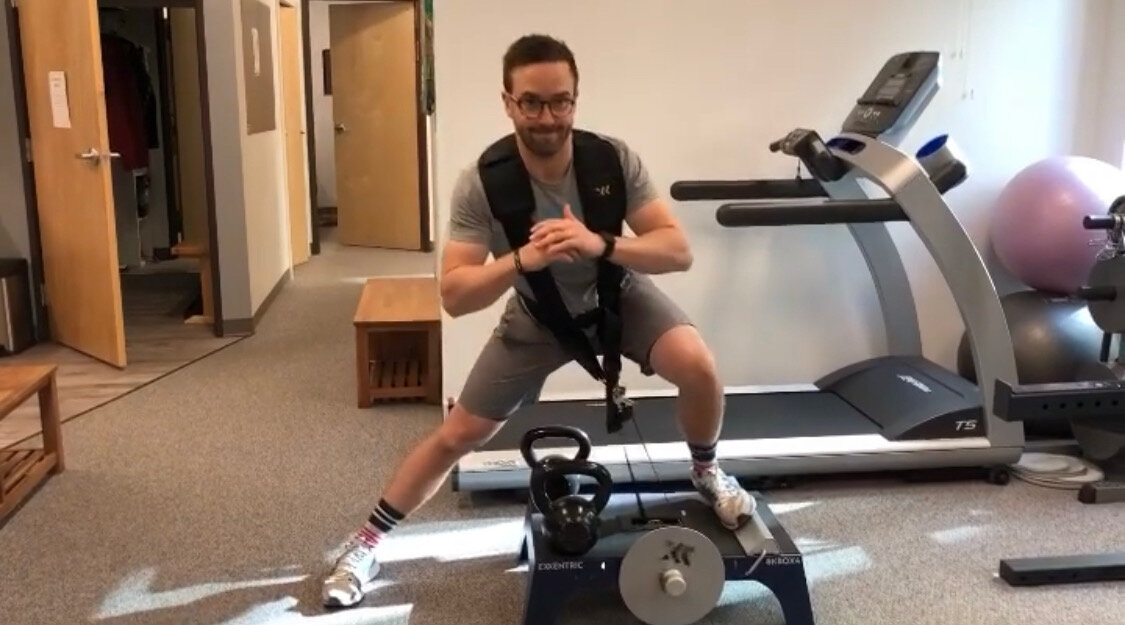In a strength training exercises two main phases of the lift are experienced by the participant. The first is the concentric contraction involving a shortening of the muscle under load as the weight is moved to the end of the movement. The second or eccentric contraction involves the lengthening of the muscle under load as the weight is returned to the starting position. Most of the strength gains from exercise occur during the lowering or eccentric phase due to a number of unique physiological advantages of this contraction.
Our ability to produce force in the eccentric phase is significantly greater than the forces we can produce in the concentric phase during an exercise. Interestingly, despite the higher forces we utilize less energy or work during the lowering phase of the exercise. With traditional weight training your ability to lift in the lowering phase is limited by the weight you can lift in the shortening or concentric phase. For example, your ability to perform a bicep curl is limited by the amount of weight you can lift in the concentric phase as you curl the weight toward your body. This phase is specifically limited by the sticking point or the weakest point in the exercise. We have all experienced the point where the lift is most challenging and once we move beyond this point the exercise becomes easier. One challenge of training eccentrically is getting past our sticking point so we can lift more weight eccentrically.
The Exxentric k box utilizes fly wheels, in place of weights, to create inertia against the participant’s exercise movement. Video examples can be found at our site. The resistance placed across the muscles is only limited by the forces the participant can produce to accelerate the fly wheel. The eccentric phase of the exercise is then utilized to decelerate the fly wheel as the participant returns to the starting position. One of the unique aspects of fly wheel training is our ability to increase the concentric force through accessory movements. Any extra muscle contraction from an adjacent body area further accelerates the fly wheel and increases the demands in the eccentric phase. Thus, we can bypass our sticking point, maximum concentric force, and optimize the forces required to more appropriately load the lowering phase, maximum eccentric force, of the lift.
Stay tuned to our instagram page for examples on how to utilize eccentric overload during your k box training sessions.

